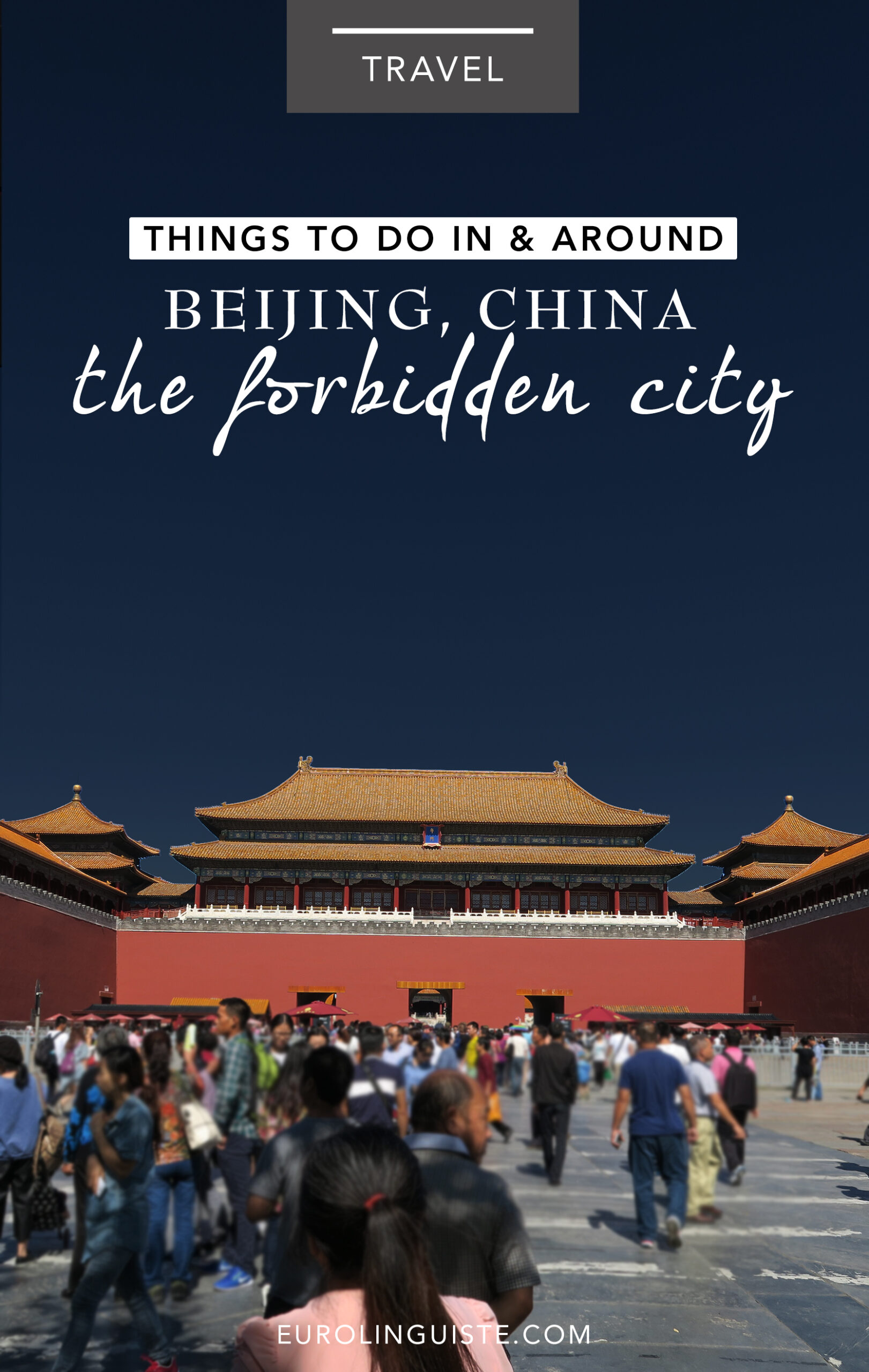The Forbidden City | Things to Do In & Around Beijing, China

My name is Shannon Kennedy and I'm the language lover,…
Originally closed to the public, the Forbidden City is now one of the most visited sites in not only Beijing, China, but the world. With 980 buildings that span over 180 acres, the Forbidden City served as the Imperial palace from the 1400s to the early 20th century.
It was declared a World Heritage Site in 1987 and is the largest collection of preserved wood structures in the world.



A History of the Forbidden City
The capital of China, originally in Nanking, was moved to Beijing by the Yongle Emperor Zhu Di and the construction of the Forbidden Palace began in 1406. Requiring the efforts of more than a million workers, the palace took more than 14 years to complete.
The Forbidden City was home to 24 emperors – 14 from the Ming Dynasty and 10 from the Qing Dynasty. It ceased its function as the political center of China with the abdication of the last emperor, Puyi, in 1912. The former emperor continued to live within the Inner Court of the city until he was evicted as a part of a coup in 1924.




In 1925, the Forbidden City became the Palace Museum, but many of its artifacts had to be evacuated from its walls with the Japanese invasion of China in 1933. Following WWII, part of the collection was returned, but another part of the collection was taken to Taiwan by Chiang Kai-shek in 1948.
Interestingly, at one point there was a Starbucks within the forbidden city. It opened in 2000 but caused so much objection and controversy, that it was eventually closed in 2007. But it hasn’t just been the coffee chain that has caused question – several of the tourist shops and souvenir stores have been under fire for gauging prices and catering to only foreign tourists.




Visiting the Forbidden City
The Forbidden City museum contains several beautiful and impressive collections, but it was really the architecture, various buildings, and gardens that really captured my attention.
It was fascinating to explore the Inner Court and the Outer Court, admiring the different buildings, temples, living spaces, and halls.




Visiting the museum was a little tough – it was one of the busiest sites I went to while in China – but it was worth it for the historic value and gorgeous architecture.
As a side note – be sure to bring your passport! It’s required to get into the museum (and it was something that I didn’t know). Thankfully the friend I was with was incredible and she saved the day (and the trip out to the museum).
Chiang Kai-shek
| Chinese | Pinyin | English |
| 紫禁城 | Zǐjinchéng | Forbidden City |
| 故宫博物院 | Palace Museum | |
| 金砖 | jīnzhuān | Golden Bricks |
| 溥儀 | Pǔyí | Puyi (last emperor) |
| 蒋介石 | Jiǎng Jièshí |










What about you?
What are some of the interesting historic sites that you’ve been to on your travels? Were they worth the visit or did you feel like they were a tourist trap?
I’d love to hear from you in the comments below!
My name is Shannon Kennedy and I'm the language lover, traveler, and foodie behind Eurolinguiste. I'm also the Head Coach of the Fluent in 3 Months Bootcamp, co-founder of Women in Language, and former Resident Polyglot at Drops.



